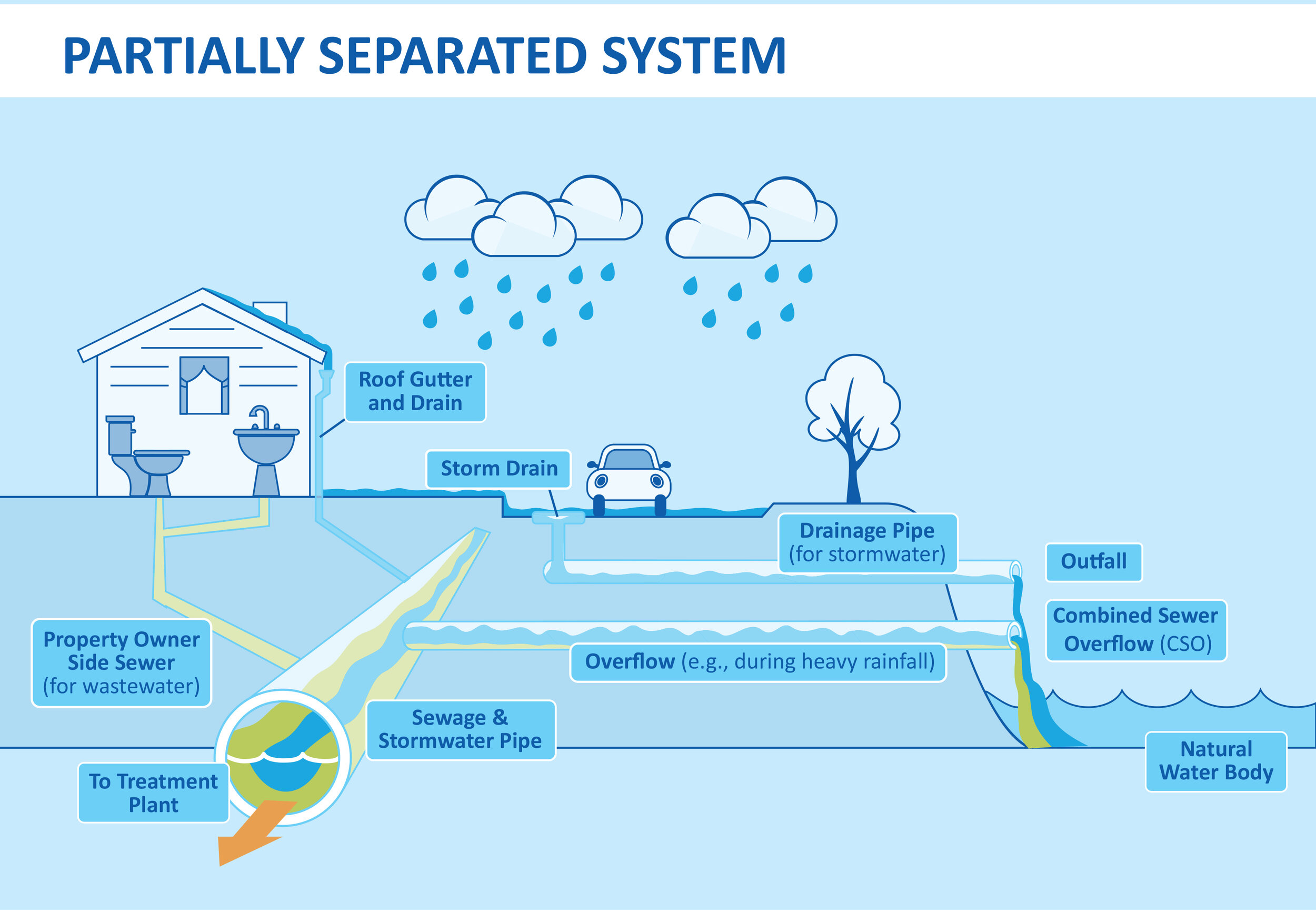Combined sewer system
Combined sewer systems are the oldest type in Seattle (70 to 100 years old). Wastewater and stormwater travel together to treatment plants through the same sewer pipe.
Combined sewer systems are the oldest type in Seattle, with infrastructure ranging from about 70 to 100 years in age. Combined sewers convey wastewater from the sinks, showers, toilets, washing machines and dishwashers of households and businesses, combined with stormwater that runs off of rooftops, lawns, streets, parking lots, and sidewalks.
Wastewater and stormwater travel together to treatment plants through the same sewer pipe. When too much water enters the pipes the system overflows into waterbodies, in an event called a combined sewer overflow (CSO).
Separated sewer system
In separated sewer systems, sewer pipes convey wastewater from homes and businesses to treatment plants. Different, separated pipes carry stormwater to drainage outlets.
In separated sewer systems, sanitary sewers convey wastewater from homes and businesses to treatment plants in different pipes than those that carry stormwater to drainage outlets. Approximately 27% of Seattle’s wastewater system is separated (mostly in the north end).
Partially separated sewer system
Partially separated sewers convey wastewater and stormwater from roof gutters and downspouts to treatment plants; all other stormwater is conveyed in separate drainage pipes.
Partially separated sewers convey wastewater from inside homes and businesses, and stormwater from roof gutters and downspouts and send these waters to treatment plants. All other stormwater (from places like storm drains) is conveyed in separate drainage pipes.
40% of Seattle’s sewer system is partially separated (primarily throughout the southern parts of the city, and in several northern basins).






